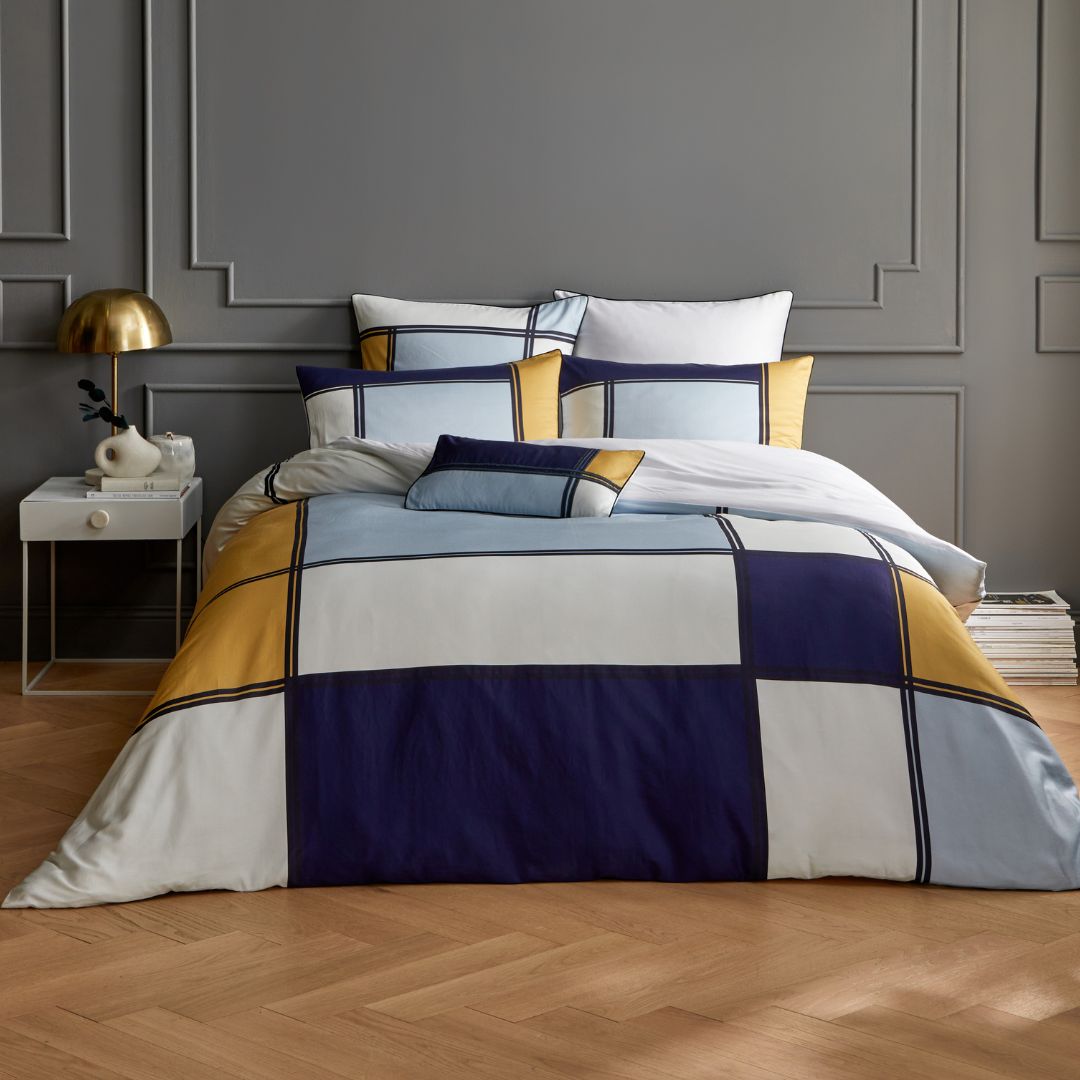Household linen is a rich universe with materials that have varied properties. We offer you a detailed guide to help you understand the differences between fabrics and choose the one that best suits your needs.
Cotton percale: softness and freshness
Percale cotton is woven from long, high-quality cotton fibers, with a density of at least 80 threads/cm². This fine and tight weave offers a soft feel and a matte appearance. Percale is ideal for those looking for breathable and fresh bedding, perfect for summer nights. It combines durability and ease of care, ensuring bedding that is both comfortable and long-lasting.
Cotton satin: elegance and comfort
Cotton satin, with its specific weave where each thread crosses several others, is renowned for its shiny appearance and silky touch. With a density of 120 threads/cm², it is softer than percale and brings a sense of luxury to every night. Although its shine dulls over time with washes, the satin becomes even more pleasant to the touch as time goes on, perfect for those who appreciate refined and elegant bedding.
Cotton flannel: warmth and comfort
Linen: natural and breathable
Linen is an ancient natural fiber, known for its durability and thermoregulating properties. It retains heat in winter and remains very breathable in summer. Washed linen, which has been softened by numerous washes, is particularly pleasant for everyday use. This fabric adds a rustic and chic touch while being extremely durable, making it an excellent choice for those looking for a sustainable and comfortable material throughout the year.
Cotton gaze: lightness and comfort
Cotton gauze is a lightweight and airy material, made up of several layers of finely woven cotton. This fabric offers a soft touch and great breathability, making it a perfect choice for sensitive skin and warm climates. Very trendy for summer blankets and light sheets, cotton gauze has the advantage of being both delicate and easy to care for, while maintaining its natural crinkled appearance that adds charm to your bedding.
Silk: luxury and refinement
Silk, a noble and precious material, is famous for its unmatched softness and natural shine. Thermoregulating, it keeps you cool in summer and provides warmth in winter. In addition to its hypoallergenic properties, it is ideal for sensitive skin and hair, as it reduces friction. Its smooth and shiny appearance adds a touch of sophistication to your bedroom, making it the ultimate choice for those who prioritize luxurious and refined bedding.
FAQ
What is the difference between linen and cotton gauze?
Linen is a thick and thermoregulating fabric, suitable for all seasons, offering robustness and durability. Cotton gauze, lighter and more airy, is ideal for warm climates and sensitive skin. It is soft, breathable, and easy to care for thanks to its naturally crumpled appearance. Linen is more durable, while cotton gauze stands out for its lightness.
What is the difference between cotton satin and silk?
Cotton satin is made from cotton with a tight weave, giving it a silky and shiny appearance. Silk, on the other hand, is a luxurious natural fiber, even softer and more radiant, with hypoallergenic properties. Silk is ideal for skin and hair, while cotton satin offers a more affordable alternative with great softness.
What is the difference between satin and percale?
Satin and percale are both made from quality cotton, but the difference lies in the weave. Percale has a tight, matte weave, offering a cool and lightweight feel, ideal for summer. Satin, on the other hand, has a more complex weave that gives it a shiny appearance and a silky touch, perfect for those seeking more luxurious bedding.
What is the difference between linen and cotton?
Linen is a very strong natural fiber with thermoregulating properties, making it an excellent choice for all seasons. It is insulating in winter and breathable in summer. Cotton, on the other hand, is softer and easier to care for, with different options like percale or satin. Linen has a more rustic appearance while cotton offers more softness and flexibility.

